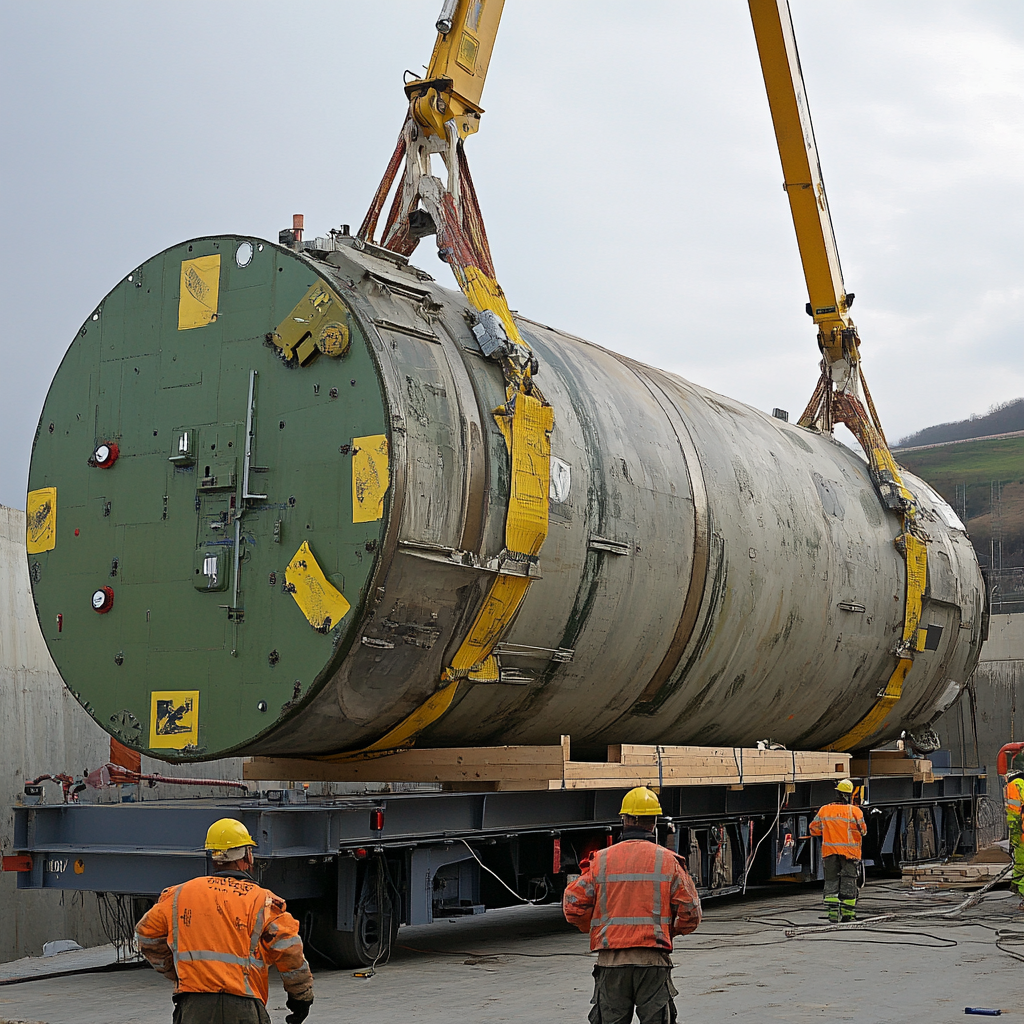
- The UK has sent the second of three planned shipments of high-level radioactive waste from the Sellafield site to Germany’s Isar interim storage facility via rail and sea.
- The waste, originating from reprocessed German nuclear fuel, has been vitrified into stable glass-like containers and transported in highly shielded casks to ensure safety.
- This repatriation process, mandated by international agreements, is set to conclude with one final shipment, completing Germany’s efforts to retrieve its nuclear waste from foreign reprocessing facilities.
The second of three planned shipments of high-level radioactive waste has left the Sellafield site in northwest England, marking another step in the repatriation of nuclear waste to Germany. The waste is being transported by rail and sea to its destination at the Isar interim storage facility.
The waste, transformed into a stable glass-like form, is first transported by rail to the port of Barrow-in-Furness before being loaded onto Pacific Grebe, a specialist nuclear transport vessel operated by the UK’s Nuclear Transport Solutions. The vessel set sail on Wednesday.
The first shipment, completed in 2020, consisted of six flasks, each containing 28 containers of high-level waste, and was sent to Biblis. The waste being returned originates from the reprocessing and recycling of Germany’s used nuclear fuel at the Sellafield site. Nuclear Transport Solutions emphasized the importance of the Vitrified Residue Returns, stating: “Vitrified Residue Returns are a key component of the UK’s strategy to repatriate high-level waste from the Sellafield site, fulfil overseas contracts, and deliver on government policy.”
Germany’s Federal Office for the Safety of Nuclear Waste Management (BASE) confirmed that the transport license was approved in December, reinforcing that the repatriation of German waste is a binding requirement under international law. Until 2005, German utilities shipped used fuel to La Hague in France and Sellafield in the UK for reprocessing. The resulting liquid waste was melted down into glass and has since been gradually returned to Germany. The last shipment from France was completed in November 2024.
One more shipment is planned after the current transport to complete the repatriation process. In April 2023, the federal office granted a license for the storage of vitrified waste at the Isar interim storage facility, which is authorized to hold up to 152 casks of high-level radioactive waste.
German nuclear specialist GNS highlighted the safety measures in place, explaining that the waste is heavily shielded from external radiation. In the reprocessing plant, the waste is mixed with liquid silicate glass and poured into cylindrical stainless steel containers. These containers, called “glass moulds,” are sealed after the glass hardens. For transport and storage, the moulds are placed inside massive cast iron and stainless steel containers, weighing over 100 tonnes, which have been rigorously tested for safety under extreme conditions.
Until 2011, reprocessed waste was sent to the Gorleben interim storage facility in Lower Saxony, where 108 casks of vitrified radioactive waste have been stored. BASE explained that this accounted for a significant portion of the total waste being returned from reprocessing. To prevent assumptions that Gorleben was designated as a permanent repository, an agreement in 2015 between the federal government, federal states, and utility companies determined that the remaining waste would be stored at Biblis, Brokdorf, Niederaichbach (Isar nuclear power plant), and Philippsburg.
In November 2024, France’s Orano completed its 13th and final rail shipment of vitrified high-level nuclear waste to Philippsburg. A total of 5310 tonnes of German used fuel was processed at Orano’s La Hague plant up to 2008.
Germany once relied heavily on nuclear energy, generating a quarter of its electricity from 17 reactors. However, following the Fukushima Daiichi accident in 2011, eight reactors were shut down immediately, and the remaining reactors were scheduled to close by the end of 2022. The Russia-Ukraine war prompted a brief extension for the last three operating reactors—Isar 2, Emsland, and Neckarwestheim 2—but they were permanently shut down in April 2023.

0 Comments